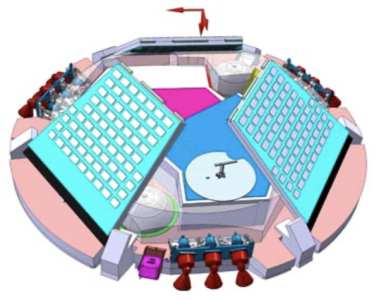Mars Surface Platform Capabilities

The objective of this study was to help define how to maintain and further develop European access to the surface of Mars, the major destination for European exploration, following the most recent approved and developed (or currently in development) missions (ExoMars 2016, ExoMars RSP).
The study provided the occasion to introduce all the heritages and lessons learned from the ExoMars EDM Schiaparelli and ExoMars RSP missions: all the experience matured in recent years has been injected into this exercise. All the most critical aspects related to the EDL, the parachute system, the avionics, the thermal protection and the thermal control system, the configuration and the structure have been reviewed in order to obtain a better system design and improved performance, leading to more resources for the payload, for payload support functions and platform systems for power generation, thermal control, deployment etc., all concurring to an improved landing platform (in general, to extra equipment).
The study shed some light on the possibility to improve upon the performances of the EDM Schiaparelli flown in 2016 on board the Trace Gas Orbiter, and assumes that the lander:
- would be flown as a single entity accommodated in a dedicated carrier (i.e. no more TGO),
- would be provided a spin–stabilised ballistic entry state,
- would have the same sizing of the heatshield diameter of Schiaparelli.
The study results show that it would it be possible, by revisiting and upgrading some parts of the system, to obtain a larger amount of resources compared to Schiaparelli, which can be used for new instruments, new equipment, or new supporting elements
The study activity provided :
- An assessment of the state of the art in Mars landing modules using ESA/European technologies with flight heritage (Schiaparelli)
- A review of lessons learned from development and from measured flight performances of known (ESA) as well as other missions for which relevant information was available (Schiaparelli, ExoMars RSP, Insight, MER)
- High-fidelity trajectory simulations were performed so as to quantify how the proposed improvements on the vehicle translate into EDL performance
- The reconfiguration of the as-flown lander following the identification of a set of applicable changes, (after having stripped out all the payload instruments and their support functions). The reconfiguration exercise was applied almost to all the subsystems, though some were more impacted than other. Reconfiguration has meant a complete review in some cases and a simple optimisation for other cases. The study surveyed: short-, medium- and long-lived platforms
- A review of the applied margin with proposals for modification of the margin philosophy where applicable
- The full update of the CAD model and provision of a 3D-XML file, both useful for a new CDF exercise
- An assessment and roadmap for possible / desirable / necessary technology development advancements which, though keeping the heritage architecture, allow incremental enhancements of the platform.
